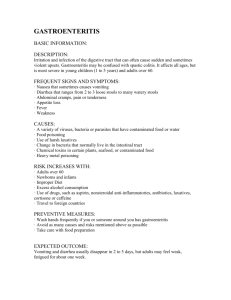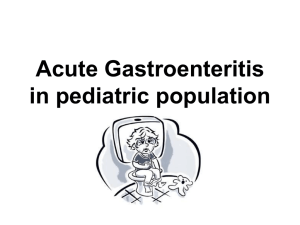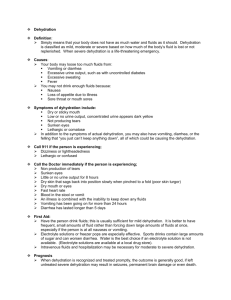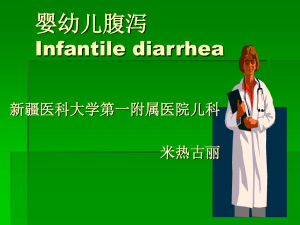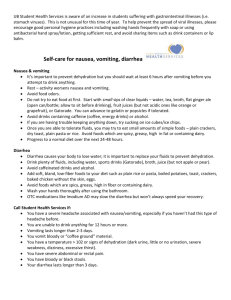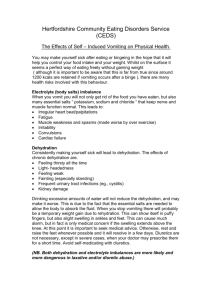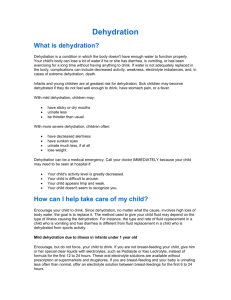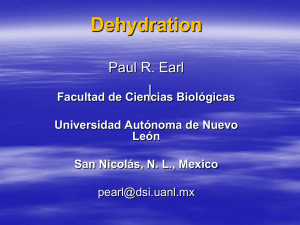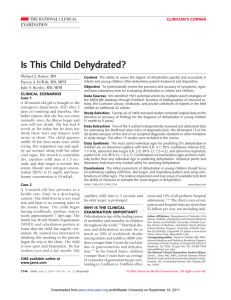Gastroenteritis and dehydration
advertisement
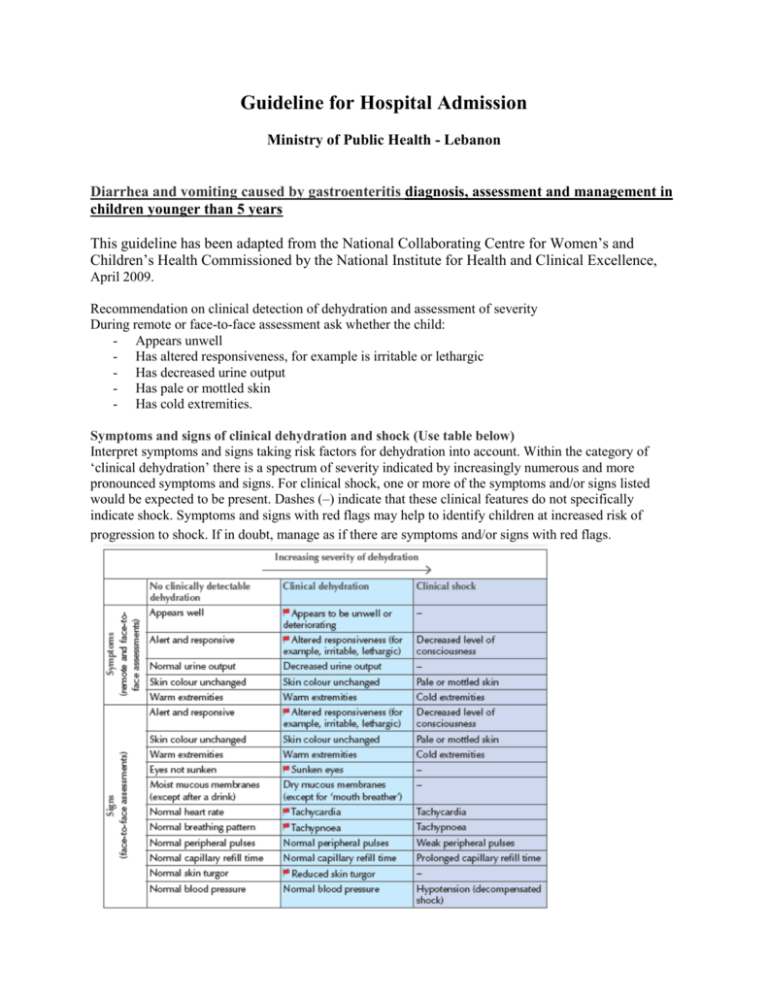
Guideline for Hospital Admission Ministry of Public Health - Lebanon Diarrhea and vomiting caused by gastroenteritis diagnosis, assessment and management in children younger than 5 years This guideline has been adapted from the National Collaborating Centre for Women’s and Children’s Health Commissioned by the National Institute for Health and Clinical Excellence, April 2009. Recommendation on clinical detection of dehydration and assessment of severity During remote or face-to-face assessment ask whether the child: - Appears unwell - Has altered responsiveness, for example is irritable or lethargic - Has decreased urine output - Has pale or mottled skin - Has cold extremities. Symptoms and signs of clinical dehydration and shock (Use table below) Interpret symptoms and signs taking risk factors for dehydration into account. Within the category of ‘clinical dehydration’ there is a spectrum of severity indicated by increasingly numerous and more pronounced symptoms and signs. For clinical shock, one or more of the symptoms and/or signs listed would be expected to be present. Dashes (–) indicate that these clinical features do not specifically indicate shock. Symptoms and signs with red flags may help to identify children at increased risk of progression to shock. If in doubt, manage as if there are symptoms and/or signs with red flags. Recognize that the following are at increased risk of dehydration: - Children younger than 1 year, particularly those younger than 6 months - Infants who were of low birth weight - Children who have passed more than five diarrhoeal stools in the previous 24 hours - Children who have vomited more than twice in the previous 24 hours - Children who have not been offered or have not been able to tolerate supplementary fluids before presentation - Infants who have stopped breastfeeding during the illness - Children with signs of malnutrition. It is recommended to admit patient for Gastroenteritis to hospital if clinical signs and symptoms are suggestive with possible clinical dehydration or clinical shock. It is not recommended to admit patient for Gastroenteritis to hospital if none of the clinical signs or symptoms are suggestive of clinical dehydration or clinical shock. In addition to the child's clinical condition, the following factors should be considered when deciding whether to admit a child with diarrhea and vomiting due to gastroenteritis to hospital: - Social and family circumstances Other illnesses that affect the child or other family members Parental anxiety and instinct (based on their knowledge of their child) Contacts with other people who have serious infectious diseases Recent travel abroad to tropical/subtropical areas, or areas with a high risk of endemic infectious disease When the parent or carer's concern for their child's current illness has caused them to seek healthcare advice repeatedly Where the family has experienced a previous serious illness or death due to diarrhea/vomiting illness which has increased their anxiety levels When a diarrhea/vomiting has no obvious cause, but the child remains ill longer than expected for a self-limiting illness. Signs (face-to-face assessments) Symptoms (remote and face-toface assessments) Checklist: Increasing severity of dehydration → No clinically detectable Clinical dehydration dehydration □ Appears well □ Appears to be unwell or deteriorating □ Alert and responsive □ Altered responsiveness (for example, irritable, lethargic) □ Normal urine output □ Decreased urine output □ Skin colour □ Skin colour unchanged unchanged □ Warm extremities □ Warm extremities □ Alert and responsive □ Altered responsiveness (for example, irritable, lethargic) □ Skin colour □ Skin colour unchanged unchanged □ Warm extremities □ Warm extremities □ Eyes not sunken □ Sunken eyes □ Moist mucous □ Dry mucous membranes membranes (except after a drink) (except for ‘mouth breather’) □ Normal heart rate □ Tachycardia □ Normal breathing □ Tachypnoea pattern □ Normal peripheral □ Normal peripheral pulses pulses □ Normal capillary □ Normal capillary refill time refill time □ Normal skin turgor □ Reduced skin turgor □ Normal blood □ Normal blood pressure pressure Clinical shock - □ Decreased level of consciousness - □ Pale or mottled skin □ Cold extremities □ Decreased level of consciousness □ Pale or mottled skin □ Cold extremities - □ Tachycardia □ Tachypnoea □ Weak peripheral pulses □ Prolonged capillary refill time □ Hypotension (decompensated shock)
